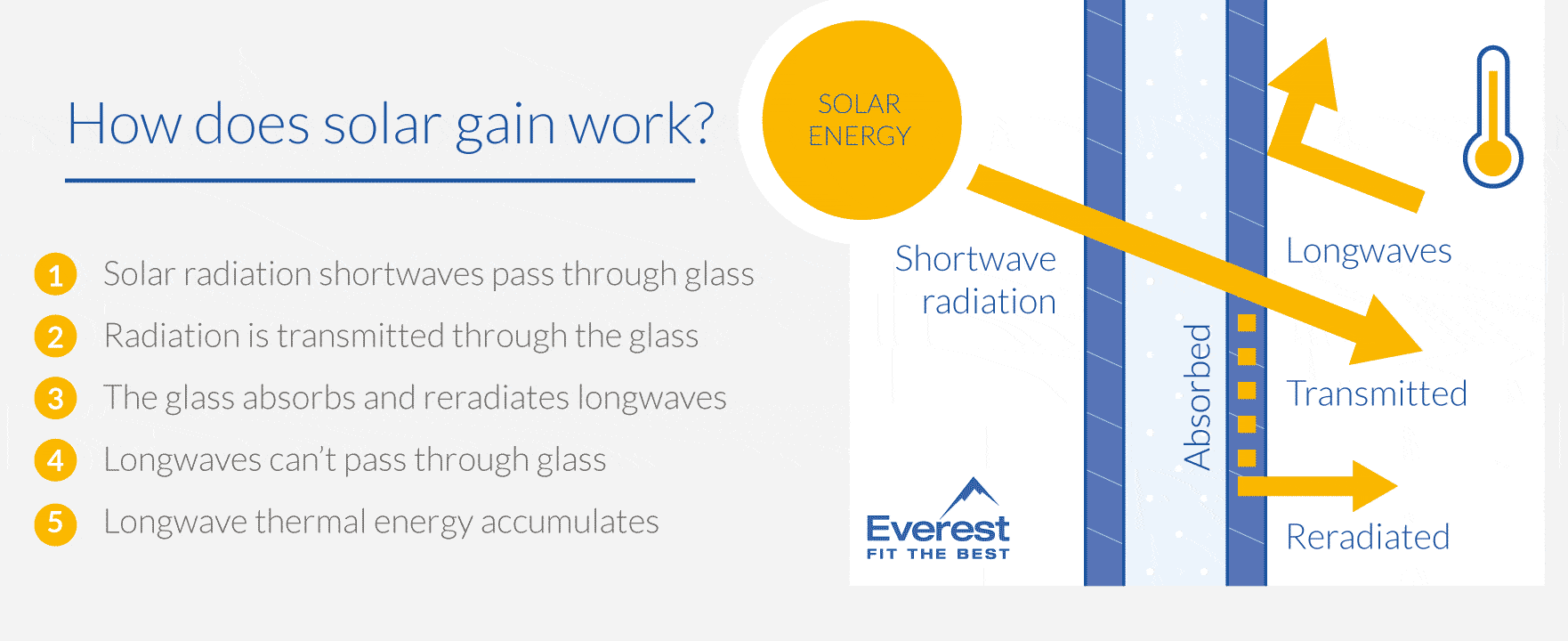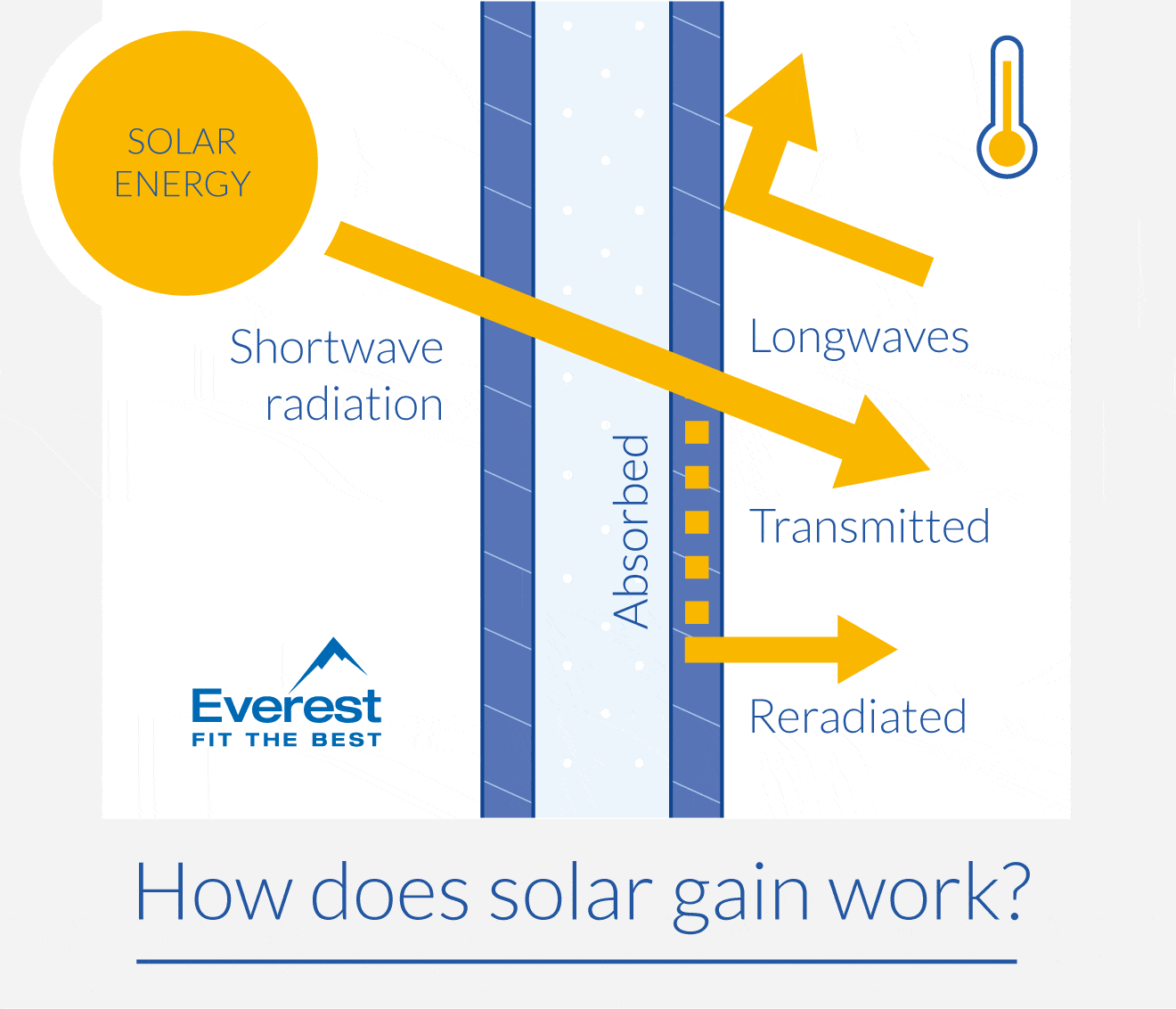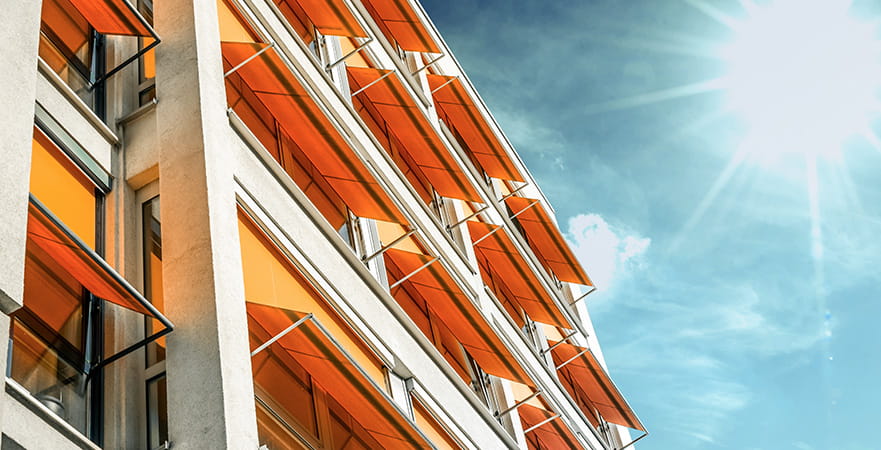What Is Solar Control Glass?
Solar glass, or solar control glass is standard glass that has a specialist metallic coating applied to reflect away infrared radiation whilst allowing UV light through the glass. This results in a glass that can allow the maximum amount of light in balance with reducing the heat from the sun.
The main reason to use solar control glass is to avoid overheating and the need to use mechanical cooling with an aim for a more energy-efficient house. Solar control is also beneficial to create a more comfortable living environment.
How Does Solar Control Glass Work?
Sunlight produces shortwave infrared radiation – this is what warms objects in the sunshine. The shortwaves are absorbed by glass from the outside and the energy becomes re-radiated from the inside of the glass as longwave infrared.
Shortwaves can pass through glass but the longwaves can't, so the thermal energy of the infrared radiation becomes trapped bumping against the glass unable to pass through. This process is known as the greenhouse effect.


Solar control glass works through a combination of reflection, absorption, and transmission to regulate the amount of solar heat and light entering a building:
- Reflection: a portion of the incoming solar radiation is reflected.
- Absorption: a portion of the solar radiation is absorbed and then reradiated
- Transmission: an amount of light passes through the glass for optimal natural light
The solar control glass that we use at Everest, is made by applying a high-performance coating by cathodic sputtering under vacuum conditions in the same process to low-e glass.
The reflective solar control coating outright reflects, absorbs and then reradiates the solar energy. The goal is to balance the reduction of heat gain and glare with the need for natural daylighting, creating a comfortable and well-lit indoor environment.
How Solar Control Is Measured
Solar control glass is predominantly measured by the Solar Heat Gain Coefficient (SHGC) or G-value. G-value is calculated from the direct energy transmitted through the glass plus the energy absorbed by the material and radiated internally into an enclosed space.
A value of 0 means all solar energy is blocked and 1 is full transmittance of energy.
Everest Triple Glazing currently offers a G value of 0.38.

Benefits of Solar Control Glass
The primary benefit of solar control glass is to reduce solar gain, which offers several advantages:
- Energy efficiency: By controlling how much solar heat is transmitted through the glass, the need for mechanical cooling and energy consumption is drastically reduced.
- Climate control: the reduction of overheating naturally creates a more comfortable and pleasant living environment without the need for mechanical cooling.
- Glare reduction: Glare from direct sunlight is minimised by selectively reflecting or absorbing a portion of the incoming sunlight. This allows for better visibility and a more productive working or living space.
- Sustainability: By improving energy efficiency, solar control glass contributes to the target of reducing carbon emissions in response to climate change.
Where Should I Use Solar Glass?
Solar control glass is recommended where solar gain can be a problem in summer months for example windows facing south and southwest.
Solar control glass can also be used in conservatories and skylights to reduce solar gain from direct sunlight.
By combining solar control glass and low-e glass in the same unit, you can create a balance of climate control during summer and winter.
Everest does not currently offer Solar Glass but we hope to be able to offer again very soon. Our Triple Glazing offers a competitive G value of 0.38.